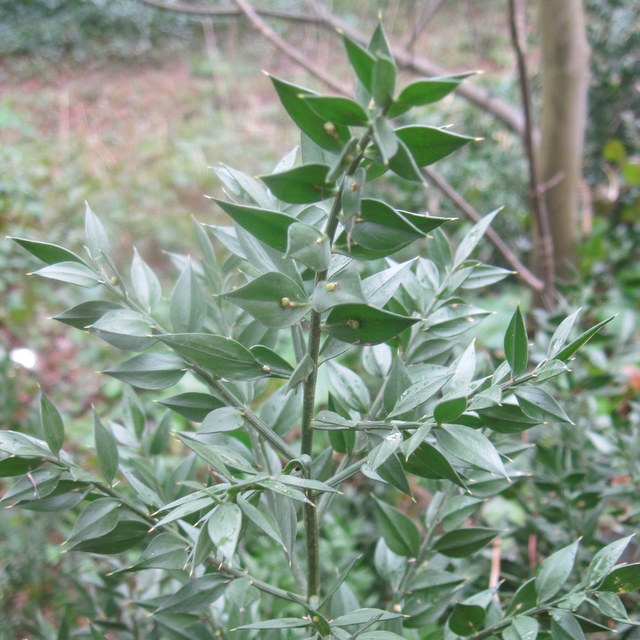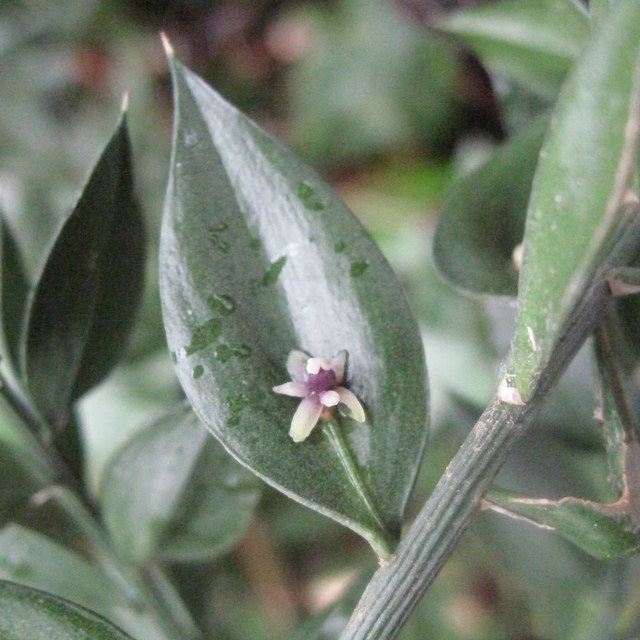
Bob and I had ventured out to Blakeney village on an uncharacteristically cold and wet Easter Sunday, to find some species which have not been recorded since the Norfolk Flora was published in 1999. Although, not on the list, this evergreen shrub, caught my eye in the woodland between Friary Hills and Wiveton, which was easily recognizable as Butcher's-broom. Small white dots could be seen sitting on the top of each ‘leaf’, which on closer inspection revealed themselves to be tiny flowers, just starting to open.The rather bizarre position of the flower is due to the fact that the ‘leaves’ are actually cladodes, a branch resembling a leaf in form and function. The cladodes are dark green, shiny and rigid with a sharp point at the apex and spirally arranged around the main stem.

Butcher’s-broom is dioecious, under closer examination of the flower under the microscope that evening, I could see a club-shaped stigma, showing that this must have been a female plant. Although Butcher’s broom is native to Southern England, most plants found in woodlands in Norfolk are garden escapes. It will be interesting to see if this bush bears fruit later in the year or whether it is part of a single-sexed clone.
